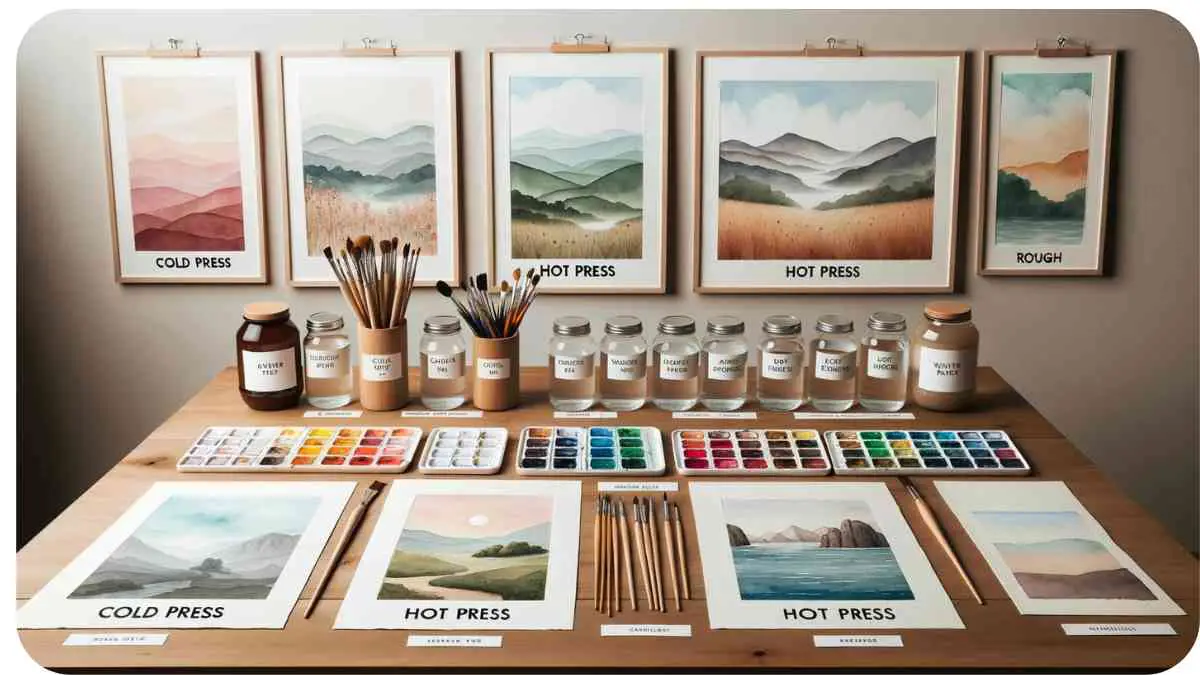Watercolor painting is a captivating art form that allows artists to create stunning works of art with the subtle interplay of color and water. But did you know that the type of paper you use can significantly impact your watercolor paintings? In this comprehensive guide, we will explore the different types of paper for watercolor, their characteristics, and how to choose the right one for your artistic style.
As a seasoned watercolorist with years of experience, I’ll also share personal insights and tips that will help you elevate your watercolor game.
| Key Takeaways |
|---|
| 1. Watercolor paper is a critical foundation for watercolor art. |
| 2. Different paper types, textures, and weights offer unique painting experiences. |
| 3. Consider your artistic style and techniques when choosing the right paper. |
| 4. Paper weight and sizing impact how paint behaves on the paper. |
| 5. Proper handling and storage of watercolor paper are essential for preserving quality. |
| 6. Experimentation and personal preference play a significant role in paper selection. |
| 7. Sustainability is a growing concern, and eco-friendly paper options are available. |
| 8. Learning from experienced artists and resources can help you make informed choices. |
| 9. Enjoy the journey of creating beautiful watercolor art with the right paper. |
2. The Importance of Choosing the Right Paper
Choosing the right watercolor paper is akin to selecting the perfect canvas for an oil painter. It’s the foundation of your artwork and can make or break your creative process. The paper’s texture, weight, and sizing all influence how the paint behaves, and ultimately, the final result of your painting.
When embarking on your scrapbooking journey, it’s crucial to select the right materials for the job. In our comprehensive guide on scrapbooking supplies, we delve into the nitty-gritty of paper choices, embellishments, and tools to help you create beautiful memories. Whether you’re a beginner or a seasoned pro, this ultimate guide has you covered.
3. Different Types of Watercolor Paper
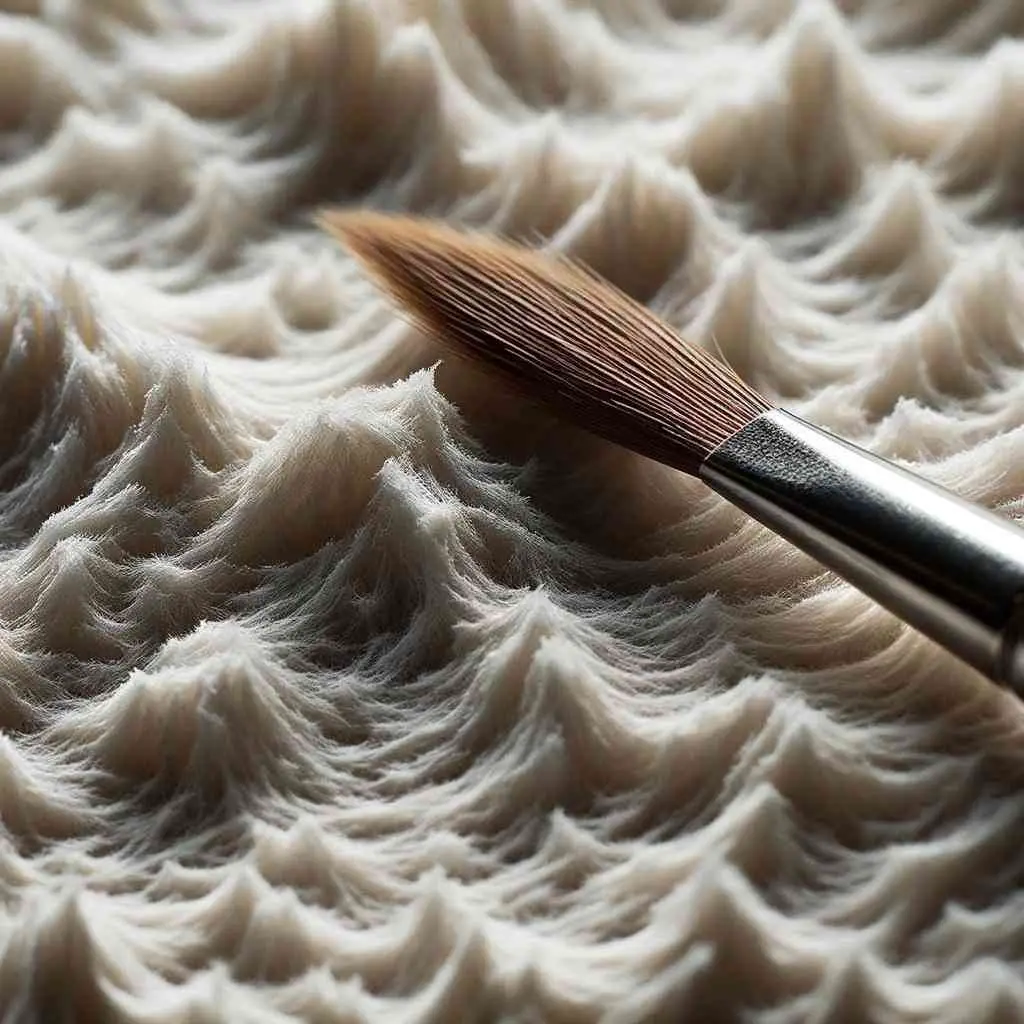
Watercolor paper comes in various textures, and understanding these textures is crucial for your artistic journey. Let’s explore the three primary types:
3.1. Cold-Pressed Watercolor Paper
Cold-pressed paper has a slightly textured surface, often resembling the texture of an orange peel. It’s a versatile choice that works well for both beginners and experienced artists. The texture helps paint grip the paper, giving your artwork a characteristic watercolor effect.
Unlock your creative potential with DIY scrapbooking projects. Learn how to craft your own unique albums and journals, adding a personal touch to your memories. Our step-by-step guide to DIY scrapbooking will inspire you to create beautiful keepsakes that tell your story
3.2. Hot-Pressed Watercolor Paper
Hot-pressed paper, on the other hand, is exceptionally smooth. It’s perfect for intricate details and precise brushwork. If you enjoy painting fine lines and intricate designs, hot-pressed paper might be your best bet.
3.3. Rough Watercolor Paper
Rough watercolor paper has a more pronounced texture, with peaks and valleys on the surface. This texture creates intriguing effects, making it ideal for artists who want to experiment with texture and have a more organic look in their paintings.
4. Paper Weight and Thickness
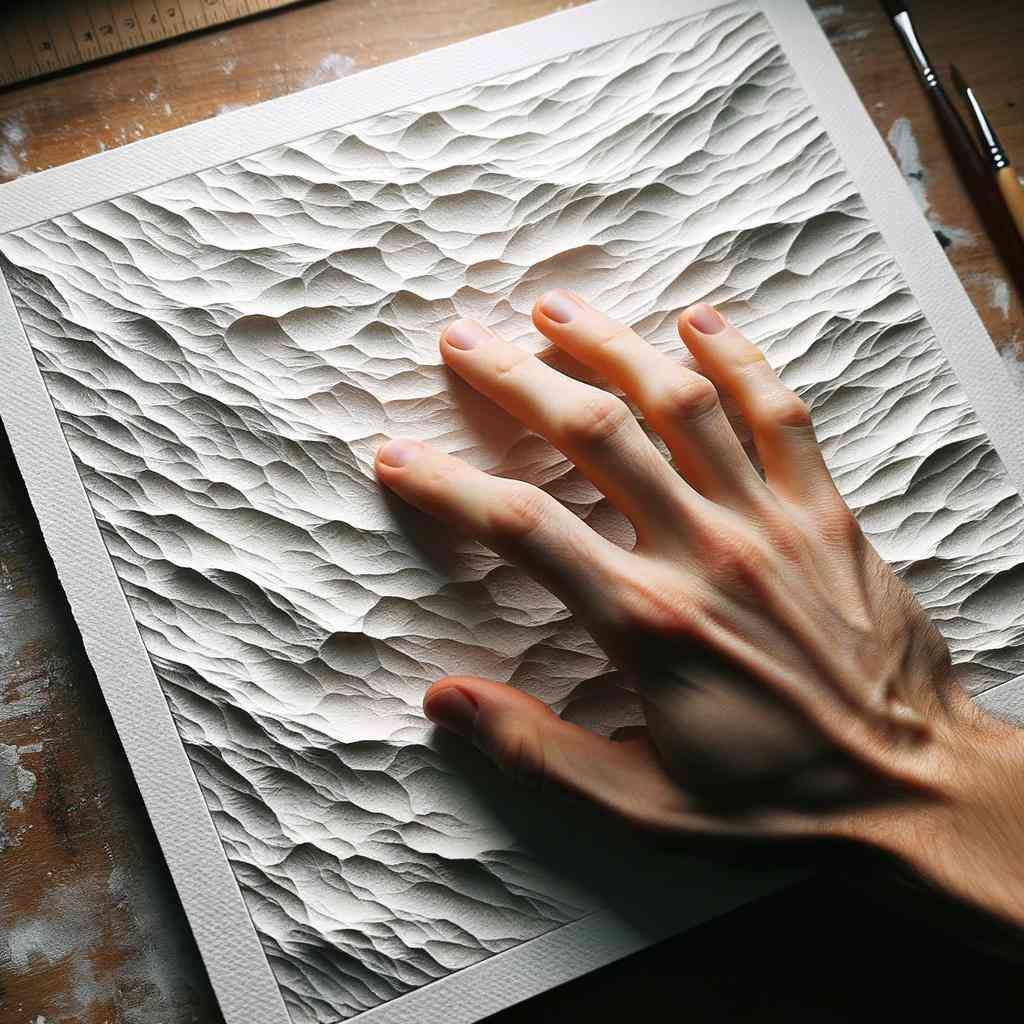
Table: Comparison of Watercolor Paper Weights
| Weight (lb) | Thickness (mm) | Suitable for |
| 90 | 0.19 | Sketching |
| 140 | 0.30 | Beginners |
| 300 | 0.56 | Professional |
Now, let’s delve deeper into the importance of paper weight and thickness when choosing the right paper for your watercolor art.
Paper weight and thickness play a crucial role in determining the overall quality and durability of your watercolor paper. Different weights are suitable for various purposes, and understanding this will help you make an informed choice.
For sketching or practice, a lighter-weight paper of around 90 lb (0.19 mm) may suffice. It’s economical and easy to work with, making it great for beginners.
If you’re a beginner looking for a paper that strikes a balance between cost and quality, 140 lb (0.30 mm) paper is a popular choice. It’s more forgiving than lighter paper and can handle washes and lifting without deteriorating.
Professional artists often opt for heavyweight paper, around 300 lb (0.56 mm), for their masterpieces. This thick paper can withstand multiple washes, heavy pigments, and vigorous techniques without warping or buckling, ensuring your art lasts for generations.
Preserve your cherished memories in style with the art of scrapbooking. In our ‘Scrapbooking 101’ guide, we walk you through the basics, from selecting the right materials to arranging layouts. Explore the world of creativity and memory-keeping in this comprehensive scrapbooking guide
5. Sizing: Internal vs. External
In the world of watercolor paper, sizing refers to the treatment that prevents the paper from absorbing too much moisture. There are two main types of sizing: internal and external.
Internal sizing is added during the paper-making process and is an integral part of the paper’s composition. It prevents paint from seeping too deeply into the paper fibers, allowing for more control and vibrant colors.
External sizing, on the other hand, is applied after the paper is made. It creates a protective layer on the paper’s surface, reducing the absorption rate and making it easier to lift off mistakes.
Let’s break down the differences between internal and external sizing further:
- Internal Sizing: When you use paper with internal sizing, your brushstrokes remain crisper, and colors appear more vibrant. This is especially important if you like to layer your colors or create intricate details in your paintings.
- External Sizing: Paper with external sizing is forgiving and allows you to make corrections by lifting off paint even after it’s dried. It’s a great choice for artists who want the freedom to experiment and make changes to their work.
6. Choosing the Best Paper for Your Style
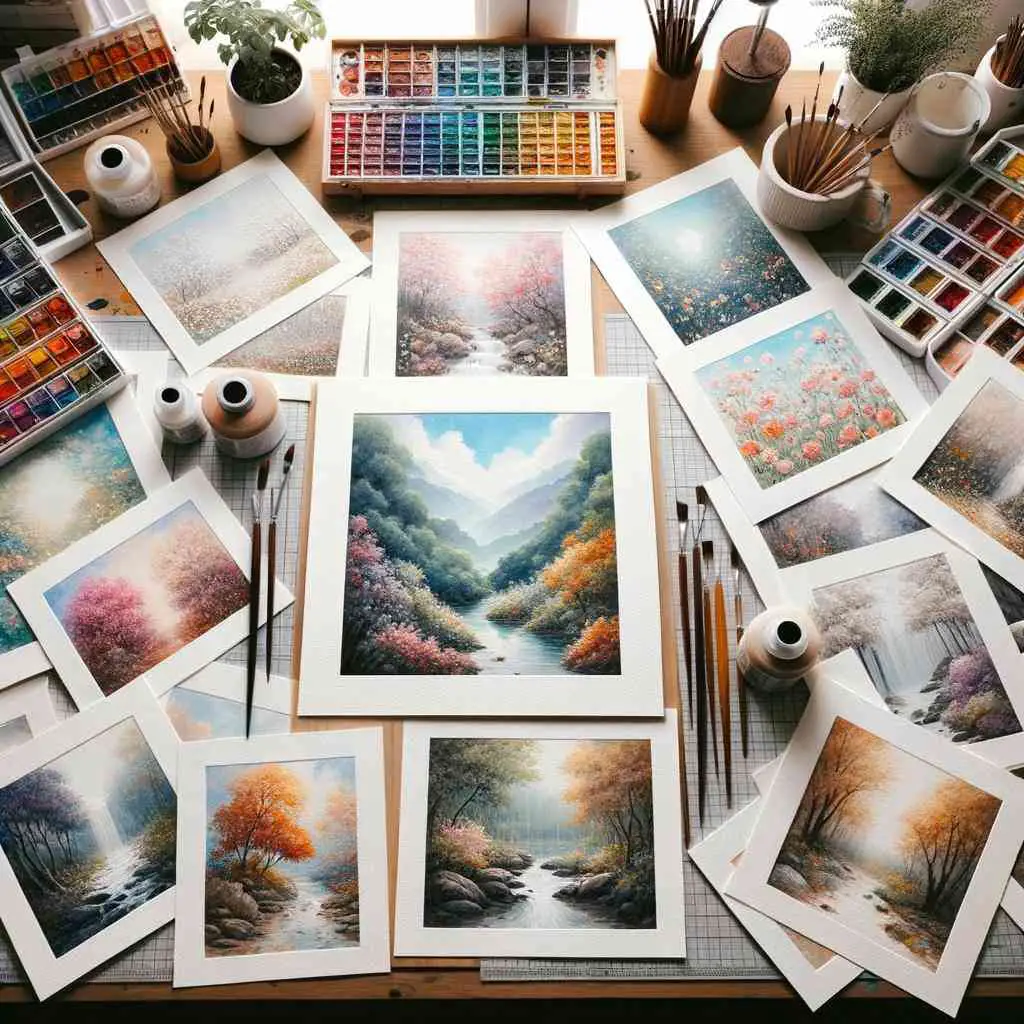
Choosing the right paper goes beyond texture, weight, and sizing; it also depends on your artistic style and techniques. Let’s explore the best paper choices for different types of watercolorists:
Card making is an art form that allows you to express your creativity. Our comprehensive guide to card making offers valuable tips and tricks for crafting beautiful cards that leave a lasting impression. Dive into the world of paper crafting with our ultimate card making guide.
6.1. Techniques for Beginners
If you’re just starting with watercolors, consider using cold-pressed paper with a weight of around 140 lb. Its forgiving texture and moderate weight will make the learning process smoother.
6.2. Advanced Watercolorists
Advanced artists who have mastered watercolor techniques often prefer heavyweight cold-pressed paper (300 lb). Its ability to handle multiple washes and intricate details is perfect for creating complex, layered artworks.
6.3. Mixed Media Artists
For those who like to combine watercolors with other mediums like ink or gouache, a paper with external sizing is an excellent choice. It allows for more experimentation and correction, enhancing your mixed media creations.
7. Brands to Consider
As a watercolor artist, you may wonder which brands offer the best paper for your artwork. To help you make an informed choice, here’s a comparison of some renowned watercolor paper brands:
7.1. Table: Comparison of Watercolor Paper Brands
| Brand | Texture | Weight (lb) | Sizing |
| Arches | Cold-Pressed/Rough | 140-300 | Internal |
| Fabriano | Hot-Pressed/Rough | 90-300 | Internal |
| Saunders Waterford | Cold-Pressed/Rough | 140-300 | External |
Arches: Arches is a beloved brand among watercolor artists for its high-quality paper. They offer both cold-pressed and rough textures, making it suitable for various painting styles. Arches paper comes in a range of weights from 140 lb to 300 lb, providing options for both beginners and professionals. The internal sizing ensures that colors remain vibrant, making it an excellent choice for artists who want their paintings to pop.
Fabriano: Fabriano is another reputable brand known for its watercolor paper. They offer both hot-pressed and rough textures, catering to artists with different preferences. With weights ranging from 90 lb to 300 lb, Fabriano provides options for various artistic needs. The internal sizing of their paper ensures that your colors stay true and vibrant on the page, making it a reliable choice for watercolorists.
Saunders Waterford: Saunders Waterford is known for its cold-pressed and rough textures, catering to artists who enjoy experimenting with surface variations. With weights from 140 lb to 300 lb, their paper is suitable for both beginners and professionals. What sets Saunders Waterford apart is its external sizing, which allows for corrections and experimentation even after the paint has dried.
When selecting a brand, it’s essential to consider your personal preferences and the specific needs of your artwork. Some artists swear by one brand, while others enjoy experimenting with different options to achieve the desired effect. Don’t hesitate to try out samples from different brands to find the one that suits your style best.
Looking for fun crafts to enjoy with your kids? Explore our list of 20 adorable projects to make with your little ones this weekend. From simple paper crafts to imaginative creations, you’ll find plenty of inspiration in this collection of kid-friendly crafts.
8. Tips for Handling Watercolor Paper

As a professional watercolorist, I’ve learned some valuable tips over the years to handle watercolor paper effectively:
- Pre-stretch Your Paper: If you’re working with lighter-weight paper, consider pre-stretching it to prevent buckling when it absorbs water. This simple technique can save your artwork from unwanted warping.
- Tape Down Your Paper: When working on larger pieces, use masking tape or artist’s tape to secure your paper to a board or surface. This prevents the paper from curling and ensures a flat working surface.
- Store Your Paper Properly: Keep your watercolor paper in a cool, dry place to prevent it from absorbing moisture. Use acid-free and archival storage materials to preserve the quality of your paper.
- Experiment with Masking Fluid: Masking fluid can be a lifesaver when you need to preserve areas of white in your painting. Experiment with different masking fluid application techniques to achieve the desired effect.
Let’s dive into more tips for handling watercolor paper:
- Master the Wet-on-Wet Technique: This technique involves applying wet paint to wet paper. It creates beautiful blends and soft transitions in your artwork. Practice this technique on various paper textures to see how it affects your results.
- Test Different Paper Sizes: Don’t limit yourself to standard paper sizes. Try experimenting with larger or smaller sheets to explore the impact on your creative process and final composition.
- Keep a Journal: Maintain a watercolor journal to document your experiments, color mixing, and paper trials. This journal can serve as a valuable reference for future projects and help you track your artistic progress.
- Embrace Mistakes: Watercolor is a medium that often surprises us with unexpected results. Embrace these happy accidents and use them to your advantage. Sometimes, a mistake can lead to a unique and beautiful creation.
9. How to Stretch Watercolor Paper
Stretching watercolor paper is a technique that ensures your paper remains flat and taut while you work. This is especially important when using lighter-weight paper. Here’s a simple guide on how to stretch your paper:
- Submerge the Paper: Immerse your paper in a clean container of water for about 10 minutes. Ensure that the entire sheet gets wet.
- Remove Excess Water: Carefully take the wet paper out of the container and lay it flat on a board or surface. Use a clean sponge or paper towel to blot off excess water, but leave the paper damp.
- Secure the Edges: Use masking tape or artist’s tape to secure the damp paper to a flat board. Stretch the paper gently as you tape it down to ensure it’s taut.
- Let It Dry: Allow the paper to dry completely. As it dries, it will tighten and become flat. This stretched paper is now ready for your watercolor artwork.
10. Storing Your Watercolor Paper
Properly storing your watercolor paper is crucial to maintaining its quality over time. Here are some tips on how to store it:
- Use Acid-Free Materials: Store your paper in acid-free folders or envelopes to prevent yellowing and deterioration over time.
- Protect from Light and Moisture: Keep your paper away from direct sunlight and excessive humidity. Exposure to these elements can degrade the paper’s quality.
- Organize by Weight and Texture: If you have various types of paper, organize them by weight and texture for easy access. This helps you quickly choose the right paper for your projects.
- Label Your Storage: Label your paper storage containers with the brand, weight, and texture of the paper inside. This makes it easy to find what you need without rummaging through stacks of paper.
11. Troubleshooting Common Paper Problems
Watercolor paper can present challenges, but with the right knowledge, you can troubleshoot and overcome common issues:
- Buckling: If your paper buckles after applying water, you can try using heavier paper or pre-stretching as mentioned earlier. Additionally, tape down your paper while working to keep it flat.
- Warped Edges: Warped edges can occur during the stretching process. To prevent this, ensure that you evenly tape down the edges of your paper.
- Color Bleeding: If colors bleed into each other more than desired, experiment with different paper textures and sizing options. Sometimes, a change in paper type can help control color diffusion.
- Paper Pilling: Pilling happens when the paper’s surface fibers lift. Avoid excessive scrubbing and lifting when correcting mistakes, as this can damage the paper.
Let’s continue with more troubleshooting tips for common paper problems:
- Cockling: Cockling refers to the rippling or wrinkling of the paper. This can occur if you use too much water. Try using less water or switching to heavier paper to minimize cockling.
- Uneven Washes: Achieving smooth and even washes can be a challenge. Practice your brush control and experiment with different paper textures and techniques to improve your washes.
- Yellowing Over Time: If your watercolor paper yellows with age, ensure that you’re using acid-free paper and storing it properly to prevent degradation.
- Overworked Paper: Overworking the paper by repeatedly adding and lifting paint can damage the paper’s surface. Be mindful of your technique and avoid excessive manipulation of wet areas.
12. Experimenting with Different Papers
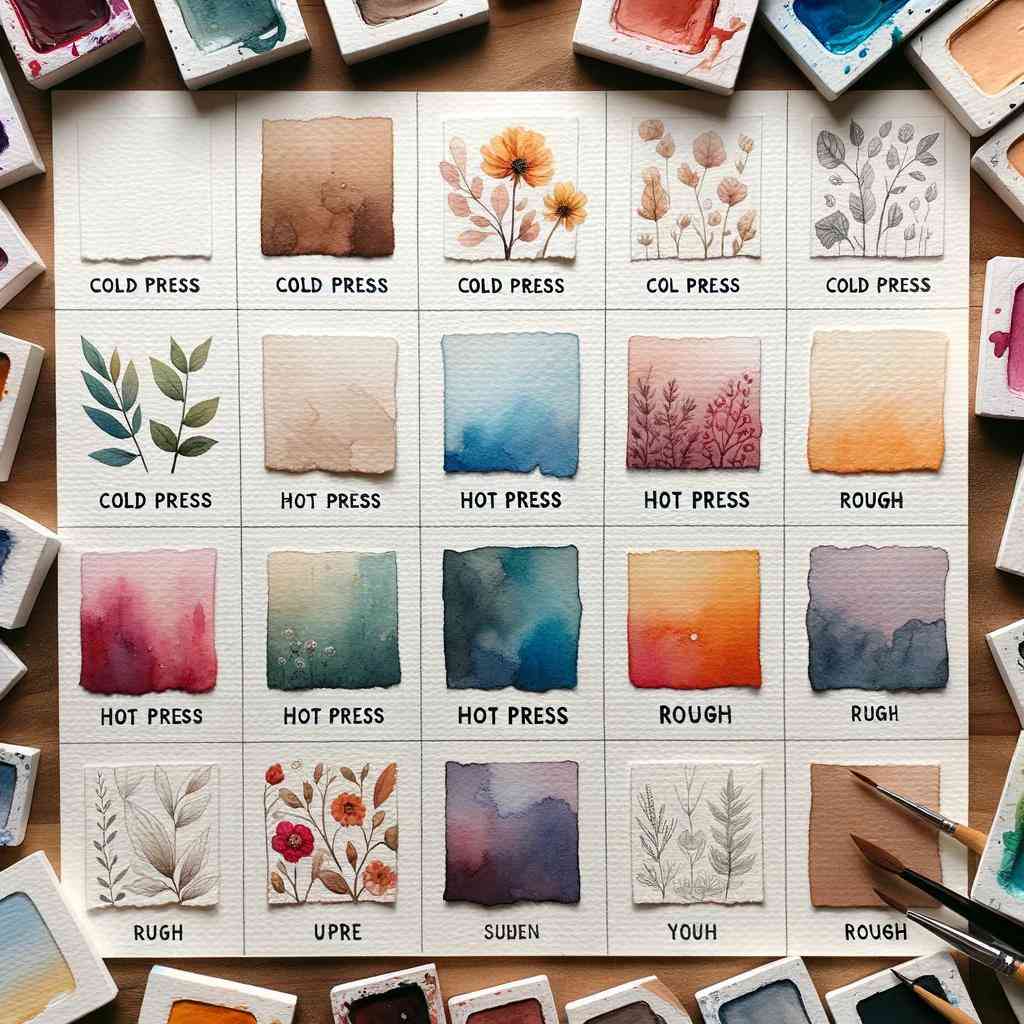
Watercolor paper is not one-size-fits-all, and part of the joy of being an artist is experimenting with different materials. Don’t be afraid to try various brands, textures, and weights to discover what works best for your unique style and preferences. Every artist has their favorite paper, and you might find yours through experimentation.
13. Sustainability and Environmental Considerations
As artists, we should also consider the environmental impact of our materials. Some watercolor paper brands prioritize sustainability by using responsibly sourced materials and eco-friendly manufacturing processes. When choosing paper, look for brands that align with your values and aim to minimize their environmental footprint.
14. Personal Insights from a Professional Watercolorist
As a professional watercolorist, I’ve had my fair share of challenges and triumphs in the world of watercolor painting. I want to leave you with this: Watercolor is a medium that rewards patience and experimentation. Don’t be discouraged by mistakes; they often lead to breakthroughs. Keep practicing, keep exploring, and most importantly, enjoy the journey of creating beautiful watercolor art.
15. Conclusion
In this comprehensive guide, we’ve explored the world of watercolor paper, from understanding different types of paper to handling it with care and troubleshooting common issues. Remember that the right paper can enhance your artistic expression and elevate your watercolor paintings. So, choose your paper wisely, experiment fearlessly, and let your creativity flow like the vibrant colors on your canvas. Happy painting!
Further Reading
The Ultimate Guide to Watercolor Papers for Beginners: Susan Chiang provides an in-depth guide tailored to beginners, offering valuable insights into choosing the right watercolor paper. This resource is a must-read for those starting their watercolor journey.
How to Choose the Right Watercolour Paper: This informative article from ArtSupplies.co.uk offers expert advice on selecting the perfect watercolor paper. Whether you’re a novice or a seasoned artist, you’ll find useful tips here.
How Do I Know What Type of Watercolor Paper to Use?: Art Is Fun breaks down the process of choosing watercolor paper, making it accessible for artists of all levels. Discover how to make informed decisions about your paper selection.
FAQs
What is the importance of choosing the right watercolor paper?
Selecting the right watercolor paper is crucial because it directly affects how your paint behaves, the final look of your artwork, and its longevity. It’s the foundation of your watercolor masterpiece.
How does paper weight affect watercolor painting?
Paper weight determines the thickness and durability of your paper. Heavier paper can handle more water and manipulation, while lighter paper is better for practice and sketching.
What’s the difference between cold-pressed and hot-pressed watercolor paper?
Cold-pressed paper has a textured surface, while hot-pressed paper is smooth. The choice between them depends on your painting style and preferences for texture.
Why is sizing important in watercolor paper?
Sizing, both internal and external, affects how much water the paper can absorb and how paint interacts with it. It plays a significant role in controlling paint behavior.
Are there eco-friendly options for watercolor paper?
Yes, some brands prioritize sustainability and use environmentally responsible materials and manufacturing processes. Look for brands that align with your environmental values when selecting paper.

Hellen James is the creator of Unified Crafts and has been crafting since she was a kid accompanied by her mom to the craft store, where she was free to choose whatever ignited her imagination.

